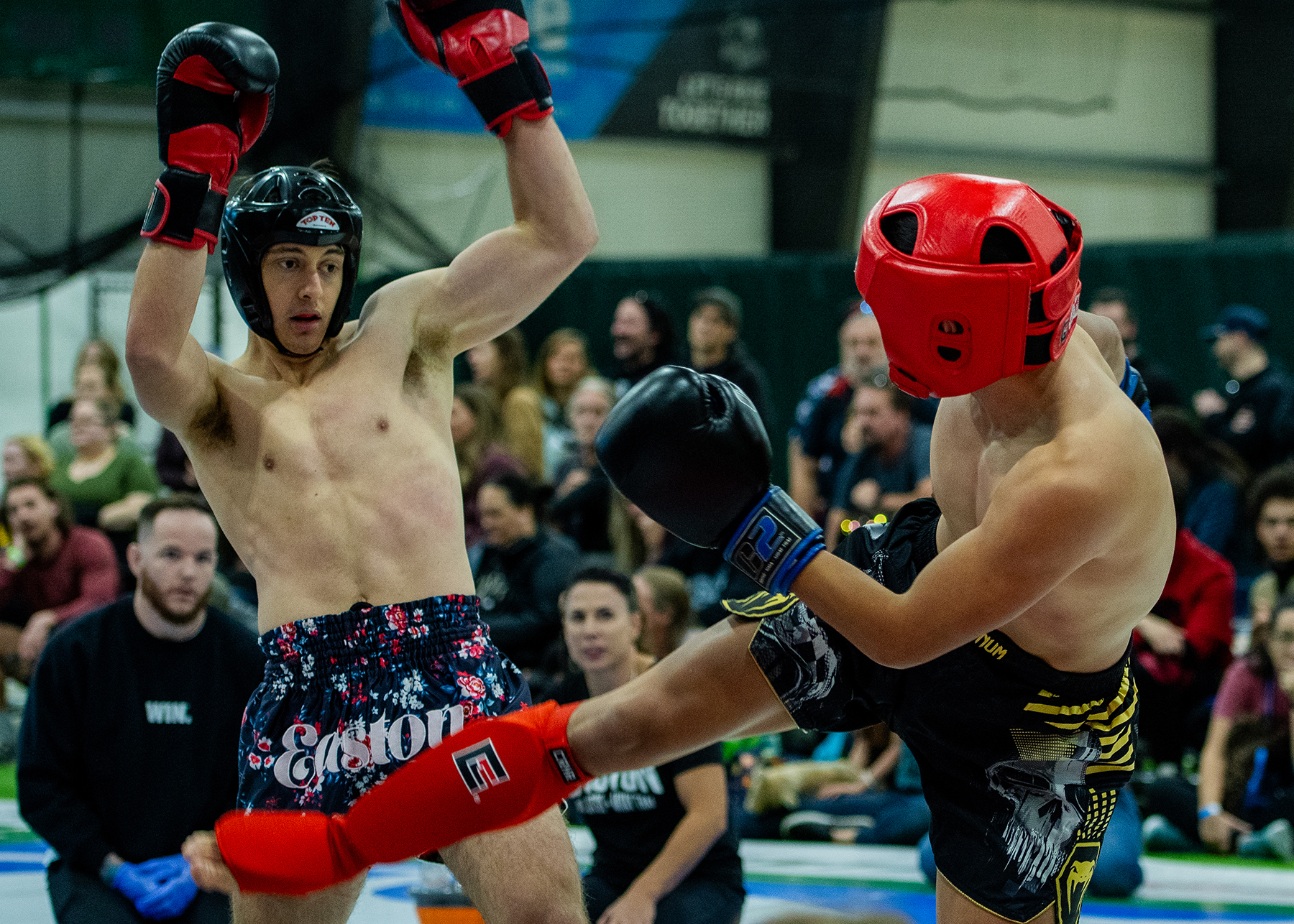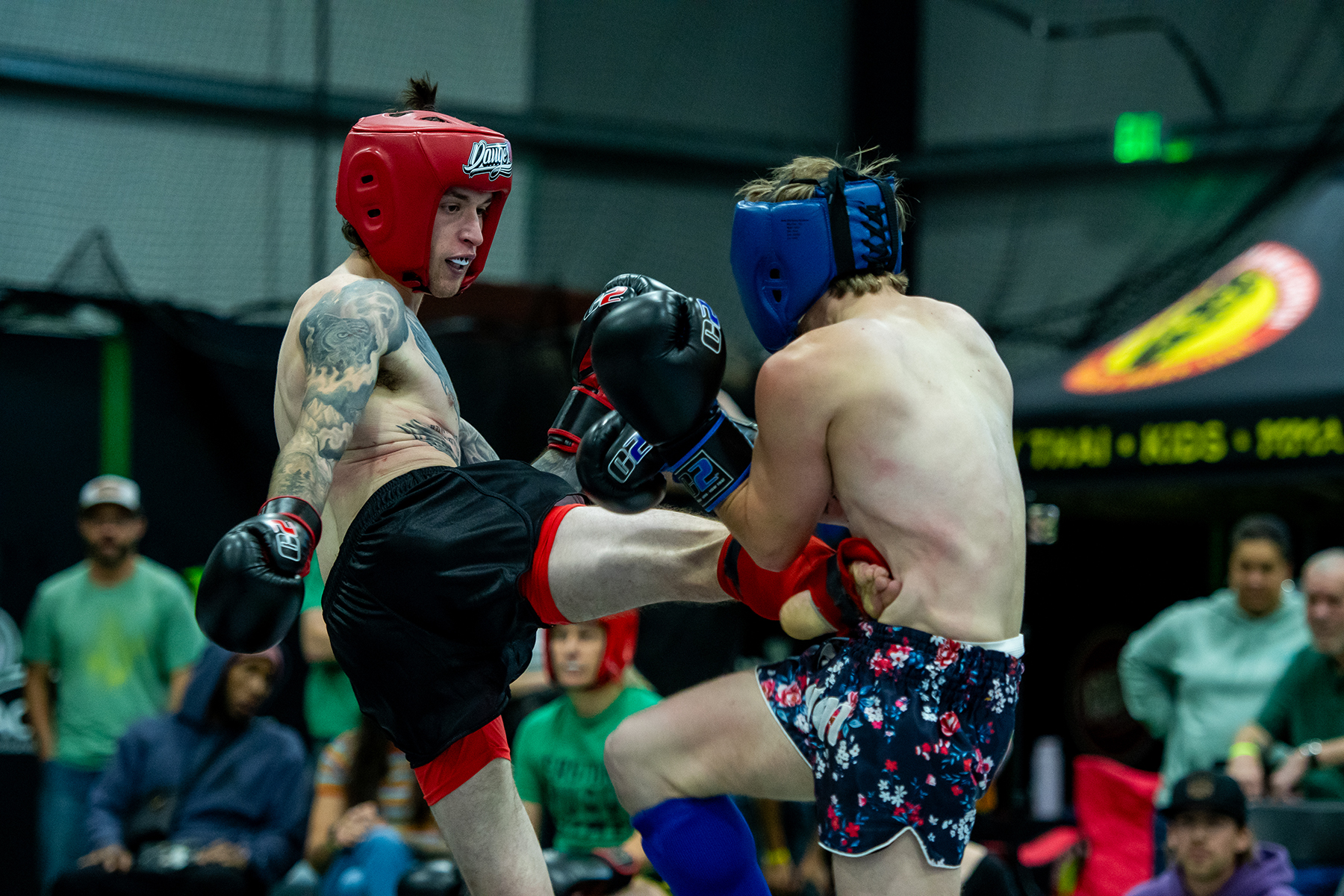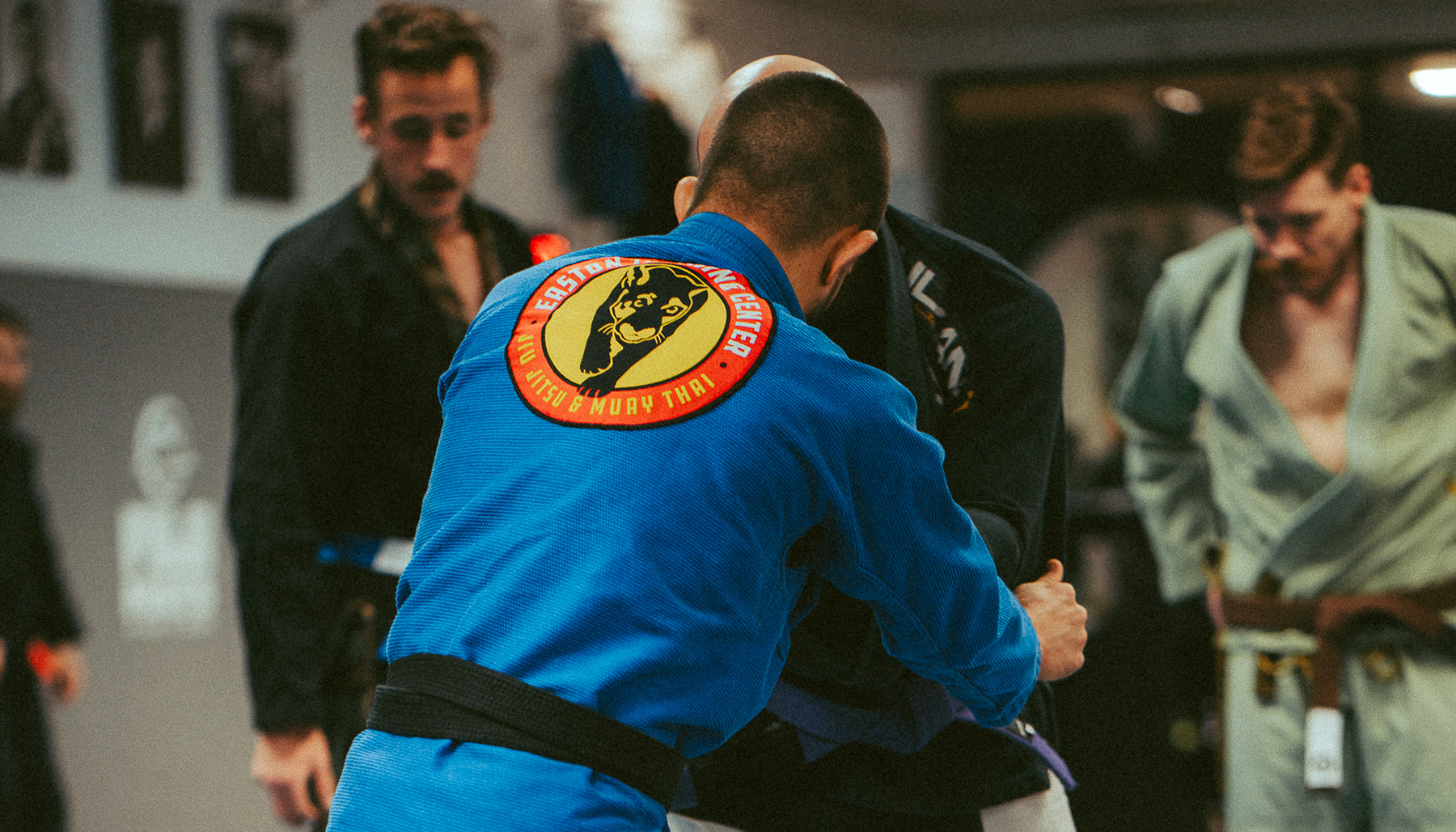What’s a scrimmage?
If you’ve attended one of our Easton Opens you’ve probably heard of the Muay Thai scrimmage. We’re often asked, what is a scrimmage?
What’s the difference between a scrimmage and a fight? Aren’t they the same thing?
To start, a scrimmage match is not a fight. When we talk about a scrimmage match, we describe it as hard sparring rounds. A scrimmage differs from a fight in terms of intentions and the overall goal of the experience. So, if the scrimmage just means hard sparring rounds, can’t you get those in the training room?
The answer is a little bit yes and a little bit no.
Of course, you will get plenty of sparring rounds in practice once you’ve reached the requisite rank. However, the rounds we get in the training room are not hard sparring rounds.
In the training room, we focus on technical sparring (tech sparring), with an emphasis on reducing the speed and power of your strikes in favor of focusing on building good reactions, feints and fakes, and strong defensive skills.

Tech Sparring vs Hard Sparring
Tech sparring is usually performed at 20-30% of full speed and power and it’s one of the best tools to improving your skills quickly. Because tech sparring happens in a safe environment, new practitioners can make mistakes without facing the serious repercussions of making those mistakes in a real fight.
At the same time, tech sparring offers advanced practitioners the space to slow things down and work on installing new techniques and skills in their game without worrying about getting injured.
Ultimately, tech sparring makes a safe and controlled environment with a single focus of working new skills and refining fundamentals. The overall tenor of tech sparring should be friendly and fun. We like to say if you’re not smiling at some point throughout a tech sparring round, you’re doing it wrong.
Hard sparring is generally reserved for those on the competition team, students who’ve trained for a significant amount of time and are preparing for a fight.
Hard sparring differs from tech sparring in a few ways. First, the speed and power gets cranked up to around 80%, with a strict emphasis on reducing power on strikes to the head. The friendly tenor of the session is gone, and the focus becomes implementing a game plan and winning rounds against your partner.
Whereas in tech sparring, if you accidentally hit your partner too hard or see them getting tired throughout the round you’re encouraged to pull back and focus on defense, in hard sparring, a fatigued training partner receives no mercy.
Hard sparring rounds become a necessity when preparing for a fight. Though, even in prep for a fight, a large majority of sparring rounds will be tech focused. So where does a scrimmage match fit into all of this?
[The Ultimate Guide to Muay Thai]
Intention makes all the difference
As we mentioned before, one of the key differences between the scrimmage and a true fight is the intention of the event. In a fight, the intent is to hurt or damage an opponent to the point where they can no longer continue. (Ideally while taking as little damage as possible.) A knockout or TKO (technical knockout) are desirable results.
In a scrimmage match, your intention should definitely not include knocking out your opponent. While strikes are thrown with power and intention, the goal switches to geting three hard rounds in front of a cheering crowd. A scrimmage match should give the competitor a simulation of what a real fight feels like without the potentially serious consequences, and competitors prepare for it as a fighter would a real fight by going through a fight camp.

If there is a clear skill difference between two competitors in a scrimmage, or one of the competitors is hurting their opponent in a significant way, the coaches and referees will work to get that competitor to pull back on their attacks so that the match can go the full six minutes.
For example, if a hard punch to the head wobbles one of the competitors, the referee and that competitor’s coaches will ask them to no longer throw head strikes. Whereas in a fight, a wobbled competitor will be given an eight-second break to recover and decide if they want to continue, a scrimmage competitor will get as much time as they need to regain their bearings and continue the match.
Even though a scrimmage match is considered a hard sparring match, the intention of the scrimmage also differs from hard sparring in the training room. In the end, the intention of the scrimmage is to simulate a fight environment while keeping the competitors safe.
[The Best Stretches For Muay Thai]
Identifying the goal
Another key difference between fighting, sparring, and the scrimmage comes down to the goal of each.
In a fight, the goal is to win. Not just win, but to dominate an opponent. Ideally, a fighter knocks out their opponent early in the first round while taking no damage themselves.
The goal of sparring differs depending on the setting and whether or not the sparring is considered “technical” or “hard” sparring. In tech sparring, the goal is to practice reactions, improve defense, and work on new techniques. In hard sparring, the goal is to simulate fight speed and intensity while getting as many rounds as possible in.
In a scrimmage, the goal becomes bridging the gap between sparring and fighting. The matches run at a hard sparring pace but stick to three rounds only and are performed in front of friends, family and training partners. With only three two-minute rounds, competitors can compete with more intensity than a hard sparring session, which could be 10 or more rounds depending on the day.
What comes next
At Easton, the first step in the competition pipeline involves participating in a scrimmage match. Once a competitor has done a scrimmage, or several scrimmages, they may be eligible to compete in an out-of-house smoker.
An out-of-house smoker will have the same intention and intensity as a real fight, and for all intents and purposes is a real fight.

After proving themselves at an out-of-house smoker, a competitor could be ready to take the next step to real fights at the amateur level –local shows and local tournaments. From there, the pipeline leads to national tournaments, out-of-state fights, and, eventually, fighting at a professional level and internationally.
That said, the first step in anyone’s journey at Easton is to get started with a kickboxing class to learn the basics of striking and to build a strong cardio base. Along the way, you’ll rank up, join Muay Thai classes, and work up into technical sparring.
Interested in fighting? The path to becoming a fighter is long and full of sacrifice. The fastest way to get there is to get started on your journey today. Try a free Kickboxing class!






